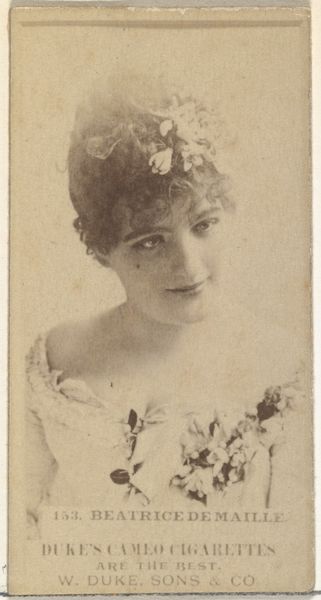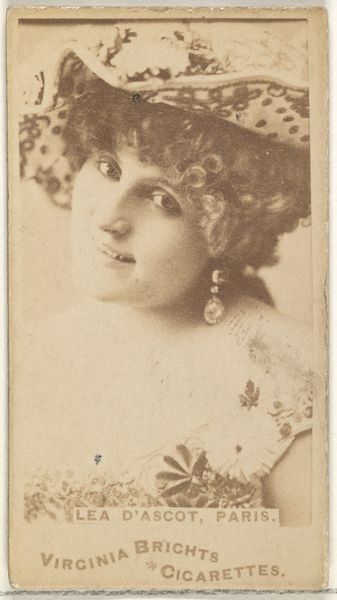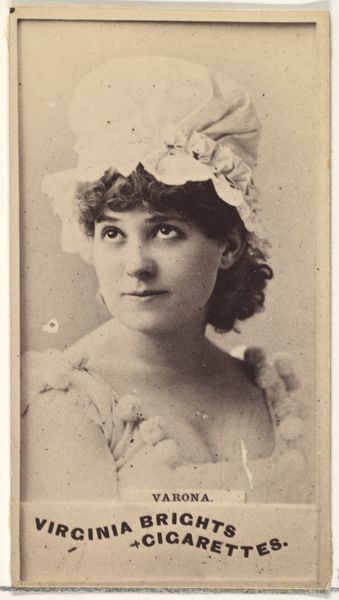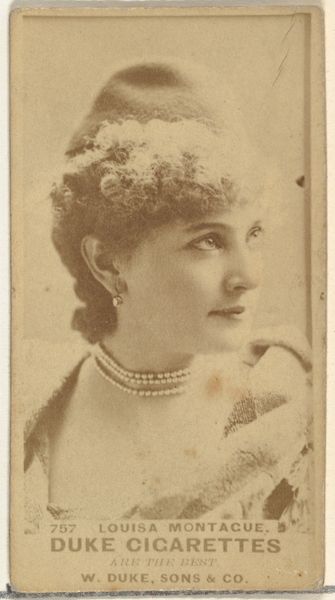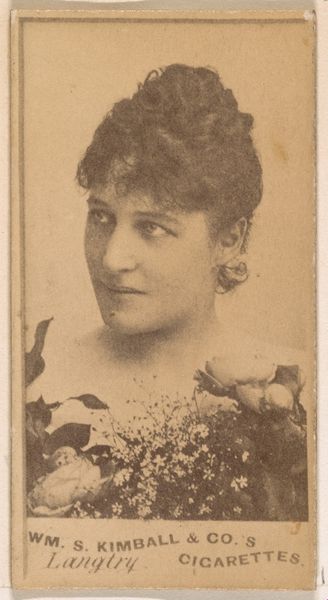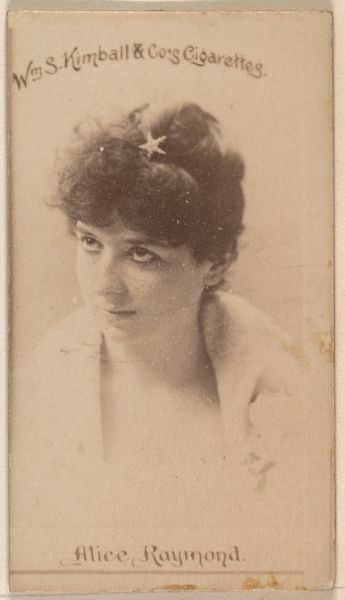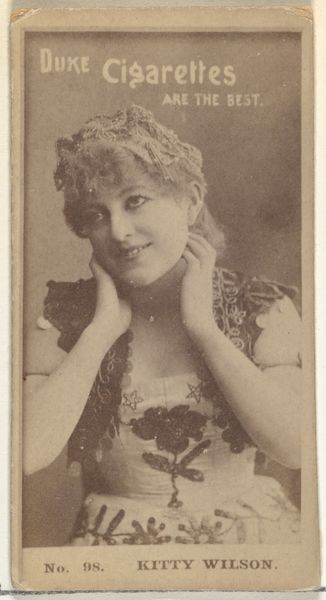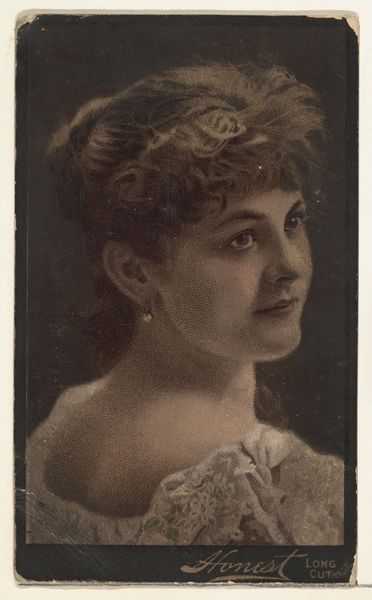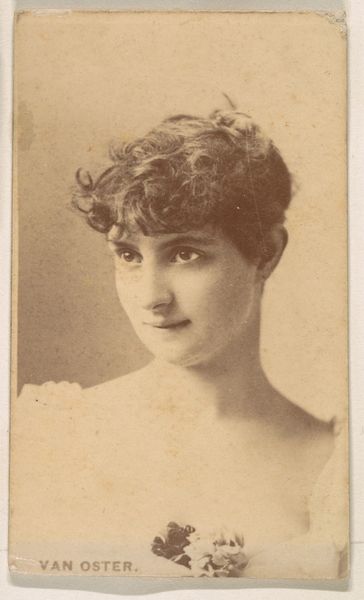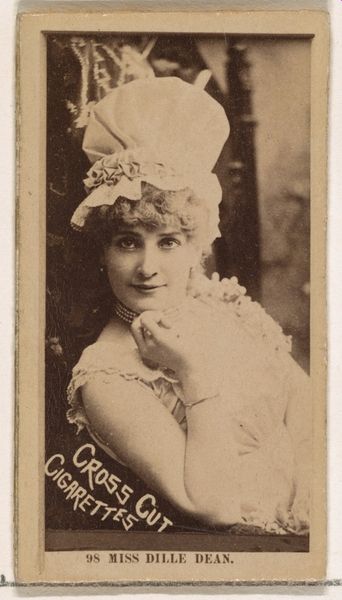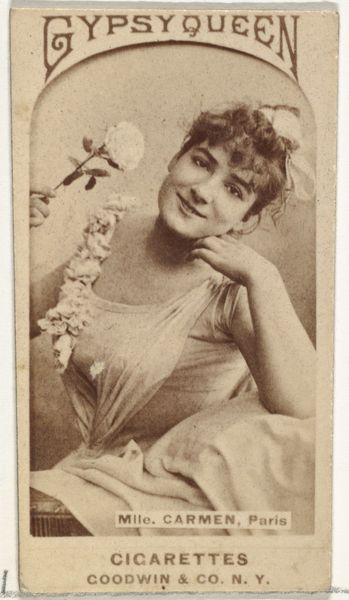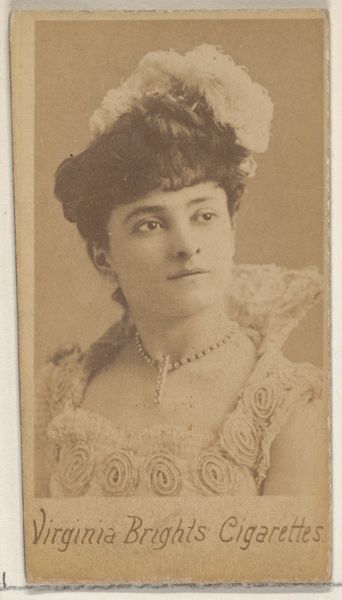
Card Number 153, Beatrice De Maille, from the Actors and Actresses series (N145-7) issued by Duke Sons & Co. to promote Duke Cigarettes 1880s
0:00
0:00
print, photography, albumen-print
#
portrait
# print
#
photography
#
historical photography
#
19th century
#
albumen-print
Dimensions: Sheet: 2 11/16 × 1 3/8 in. (6.8 × 3.5 cm)
Copyright: Public Domain
Curator: This is an albumen print from the 1880s, a promotional card titled "Card Number 153, Beatrice De Maille, from the Actors and Actresses series." It was issued by Duke Sons & Co. to promote their Duke Cigarettes. Editor: My immediate impression is one of restrained elegance, even a touch of melancholy. The soft focus and sepia tones lend it a dreamlike quality. The actress's tilted gaze creates a subtle yet captivating interplay with the viewer. Curator: The photograph appears in a moment when the rise of consumer culture was changing celebrity, fueled by the rising tide of advertising. De Maille becomes both artist and product. Note the overt connection between feminine beauty and a then-masculine-coded product – the cigarette. Editor: Indeed, and if we consider the tonal range, from the velvety blacks of her hair to the pearlescent whites of her dress, it crafts a study of contrasts. Even the textured floral embellishments, echoed in the headdress and the gown, play with ideas about softness and fragility. Curator: Also, what does it say about our perceptions and expectations of women? We expect female celebrities, especially then, to participate in the capitalist structure and promote a brand – even if it compromises health. Does Beatrice, forever fixed here, have agency or is she simply a puppet? Editor: It’s interesting that you bring up agency, as in her face, despite its conventional prettiness, possesses a hint of something unreadable – determination or perhaps a guarded sadness. She’s not merely posing; there's a psychological depth created by shadow, and her gaze has direction. It keeps our eyes exploring the composition. Curator: And the mass production and dissemination of her image also meant wider visibility, however conditional, for actresses like Beatrice. This card offered opportunities that might have been denied otherwise, so can we interpret it as an act of claiming the public sphere, especially during an age when society prescribed roles so rigidly based on gender? Editor: These questions are welcome as we explore these historical threads through visual analysis. Thank you for prompting these avenues of discussion. Curator: My pleasure.
Comments
No comments
Be the first to comment and join the conversation on the ultimate creative platform.
